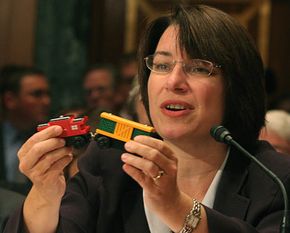Was 2007 the year of the Chinese product recall? It does seem that way, with numerous Chinese-made products being taken off the shelves in what may be a record year for toy recalls. U.S. regulatory agencies and companies instituted numerous recalls for defective, dangerous or toxic products, such as toothpaste, children's jewelry, toys, tools, dog food, baby bibs, tires and computer batteries. The common link between many of these products: They were made in China and contain lead paint.
To investigate what's going on here, let's look at a few of the dozens of recalls that have taken place. In July 2007, Mattel recalled some of its "Dora the Explorer" and "Sesame Street" toys due to concerns about lead paint. On Aug. 2, 2007, Fisher-Price, a subsidiary of Mattel, recalled 967,000 plastic toys with lead paint. On Aug. 14, Mattel recalled 19 million more toys: 436,000 toy cars with lead paint and 18 million other toys (63 different models) that contained magnets that are dangerous if swallowed [source: NY Times]. On Sept. 21, after the deaths of three children, the Consumer Products Safety Commission recalled one million Chinese-made Simplicity and Graco Cribs. In this case, and with some of the year's other product recalls, the problem was attributed to a design flaw -- not shoddy construction by a Chinese manufacturer.
Advertisement
If the dangers of lead paint are well known, then why do so many Chinese-made products still contain it? First, lead paint is inexpensive, and it produces vivid colors. It also goes on easily and resists corrosion.
In the United States, lead paint was outlawed in 1962 for use in children's toys and products, apartments, houses, hospitals and similar structures. (Lead paint is still legally used on street signs and in a variety of other areas where it doesn't pose a health hazard.) Government regulations state that children's products whose lead content exceeds 0.06 percent face a recall [source: Washington Post].
Pollution and lead poisoning are major problems across China. At least 10 percent of Chinese children suffer from lead poisoning due to lead found in paint, food, water and other sources [source: Press Interpreter]. Lead poisoning can cause numerous health problems, including kidney failure and brain damage.
Since many of these recalled products were made in China, are Chinese manufacturers to blame? What role do the corporations that design and sell the products play? On the next page, we'll investigate some of the reasons behind the spate of recalls.
Advertisement

